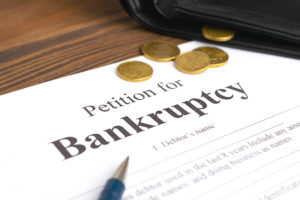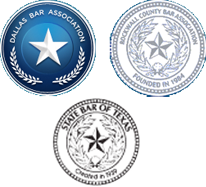Understanding Your Options and What You Can Accomplish
 If you’ve lost your job because of the COVID-19 crisis, you may already be feeling the financial crunch. Unfortunately, for many, it appears that those jobs won’t be coming back soon. As your financial challenges mount, you might consider personal bankruptcy as a tool for getting a fresh start. But what options are available? What can you hope to accomplish with a personal bankruptcy filing. In this blog, the first in a series, we look at the two most common types of personal bankruptcy filings, providing a general overview.
If you’ve lost your job because of the COVID-19 crisis, you may already be feeling the financial crunch. Unfortunately, for many, it appears that those jobs won’t be coming back soon. As your financial challenges mount, you might consider personal bankruptcy as a tool for getting a fresh start. But what options are available? What can you hope to accomplish with a personal bankruptcy filing. In this blog, the first in a series, we look at the two most common types of personal bankruptcy filings, providing a general overview.
The Most Common Ways to File for Bankruptcy Protection
As a general rule, bankruptcy filings are governed by federal law, though individual states have different rules regarding what property you can keep. The vast majority of personal bankruptcy petitions are filed under Chapter 7 or Chapter 13 of the U.S. Bankruptcy Code.
Chapter 7 Bankruptcy
Chapter 7 bankruptcy, also known as “liquidation,” allows you to permanently discharge certain debts in exchange for transferring some of your property to the bankruptcy trustee. That property is then sold, and the proceeds are distributed among your creditors. There are specific rules regarding what debts can or cannot be discharged. Most family law obligations are expressly forbidden. Tax arrearages are very difficult to discharge. And student loan debt may be discharged only upon a showing of hardship. In addition, you typically cannot discharge secured debt and keep the collateral. You can, however, claim some property as exempt from transfer—that usually includes a certain amount of equity in a home or car, as well as some personal assets.
It’s important to understand, though, that you must qualify to file for protection under Chapter 7 by submitting to a “means test,” which requires that you demonstrate to the bankruptcy court that you lack the means to repay your creditors over a three-to-five-year period.
Chapter 13 Bankruptcy
In Chapter 13, also known as “debtor’s reorganization,” you can keep all your property, but you must establish a plan to repay your creditors, and the plan must be approved by both your creditors and the court. Often, as part of the process, you can negotiate with creditors to waive any late fees and penalties incurred or work out a payoff amount less than the balance due. The reorganization plan typically lasts three to five years, and you have the protection of the “automatic stay” during that entire period, as long as you comply with the terms of your reorganization.
Contact an Experienced Rockwall, Texas, Bankruptcy Attorney
At the Law Offices of Carrie Weir, all potential clients are entitled to a free initial consultation. I am currently communicating with clients by phone, text message, and videoconference. To arrange an appointment, contact my office online or call 972-772-3083. I handle Texas personal bankruptcy filings in Rockwall County, Collin County, Dallas County, Hunt County, and surrounding counties.








Speak Your Mind